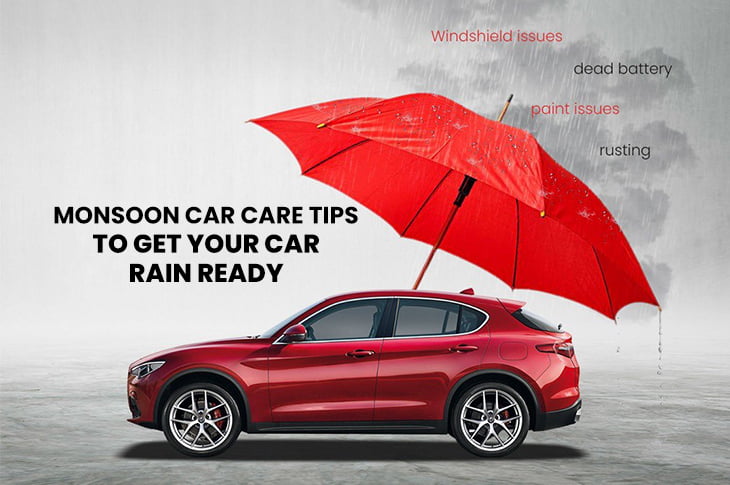🌧️ How to Drive Safely During Monsoons

The monsoon brings much-needed relief from the heat — but also brings slippery roads, low visibility, and water-logged streets, making driving riskier than usual.
Here’s your complete guide to driving safely during the rainy season and protecting both yourself and your car.
🚦 Why Is Monsoon Driving Risky?
Wet roads reduce tyre grip, increasing chances of skidding.
Heavy rain causes poor visibility.
Potholes and hidden road damage are harder to spot.
Waterlogging can lead to engine damage or breakdowns.
That’s why monsoon driving needs extra care and attention.
 Monsoon Driving Safety Tips
Monsoon Driving Safety Tips
1️⃣ Check Your Tyres Regularly
Ensure your tyres have at least 2.5 mm tread depth.
Worn-out tyres = zero grip on wet roads.
Keep tyre pressure slightly lower for better traction.
2️⃣ Use Headlights, Not High Beams
Turn on low-beam headlights in rain or fog to improve visibility.
Avoid high beams – they reflect off raindrops and blind other drivers.
3️⃣ Maintain a Safe Distance
Wet roads increase stopping distance.
Always keep extra distance from the car ahead to avoid skidding during sudden braking.
4️⃣ Avoid Sudden Braking or Acceleration
Be gentle on the accelerator and brake.
Sudden inputs can cause loss of control on slippery roads.
5️⃣ Check Your Wiper Blades
Replace old or cracked wipers before the rains.
Use a rain-repellent solution for the windshield for clearer vision.
6️⃣ Test Your Brakes
Drive slowly through water and tap brakes lightly after crossing to dry them out.
If brakes feel soft or slow, get them checked immediately.
7️⃣ Avoid Driving Through Deep Water
Water can damage your engine, ECU, and exhaust system.
If water is above half the tyre, it’s best to turn back.
8️⃣ Drive in the Center of the Road
Water tends to collect more on the sides.
The center is often safer and shallower.
9️⃣ Turn On Hazard Lights When Visibility Is Poor
Use hazard lights only when it’s hard to see and you’re moving slowly or stopped.
Don’t use them during regular driving.
🔟 Keep Defoggers & AC On
Use the defogger or air conditioner to keep the windshield from fogging up.
✅ Pro Tips for Driving During Monsoons
💡 Pro Tip 1: Carry a Windshield Water-Repellent Spray
Apply it on your windshield and ORVMs — it makes water bead off quickly, improving visibility during rain.
💡 Pro Tip 2: Use Fog Lamps Correctly
If your car has front/rear fog lamps, turn them on in heavy rain or low visibility, but turn them off when not needed — they can blind other drivers.
💡 Pro Tip 3: Avoid Cruise Control on Wet Roads
Cruise control can make it harder to react quickly on slippery roads. Stay in manual control of your speed.
💡 Pro Tip 4: Drive with Both Hands on the Wheel
This gives you better control in case your tyres hydroplane or roads are uneven.
💡 Pro Tip 5: Keep Fuel Tank at Least Half Full
You may get stuck in traffic or detour due to flooding. A half-full tank keeps the fuel pump safe and ensures you’re not stranded.
💡 Pro Tip 6: Use AC with Fresh Air Mode
This helps defog the windows faster and keeps the cabin air circulating properly in humid weather.
💡 Pro Tip 7: Take Breaks in Long Rains
Long monsoon drives can cause driver fatigue due to noise and stress. Take regular breaks to stay sharp.
🏁 Conclusion: Drive Smart, Stay Safe
Monsoon driving can be smooth and safe if you take the right precautions. Stay alert, drive slower, and keep your car rain-ready.
💡 Pro Tip: If it’s raining heavily and visibility is very poor, it’s safer to wait it out.